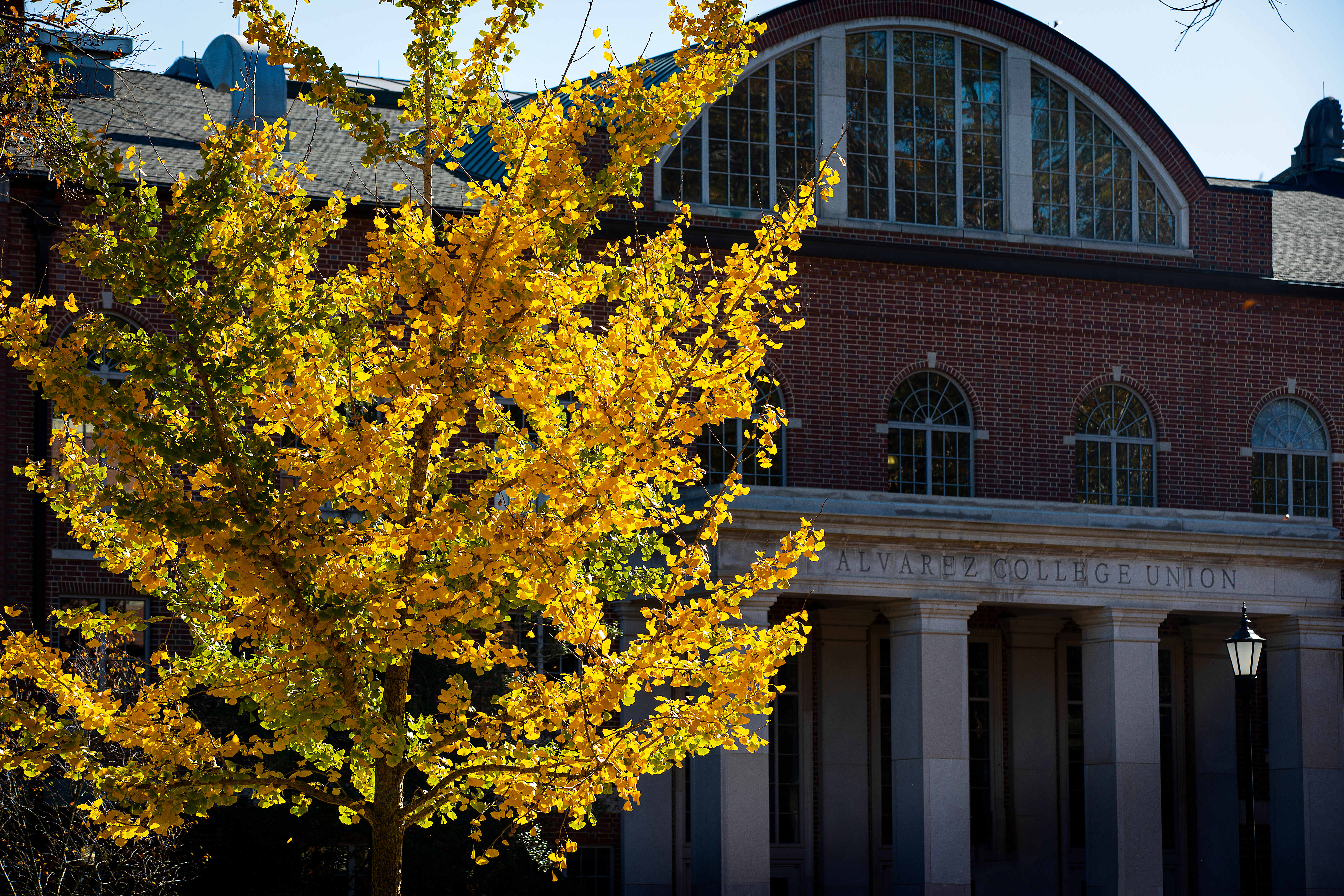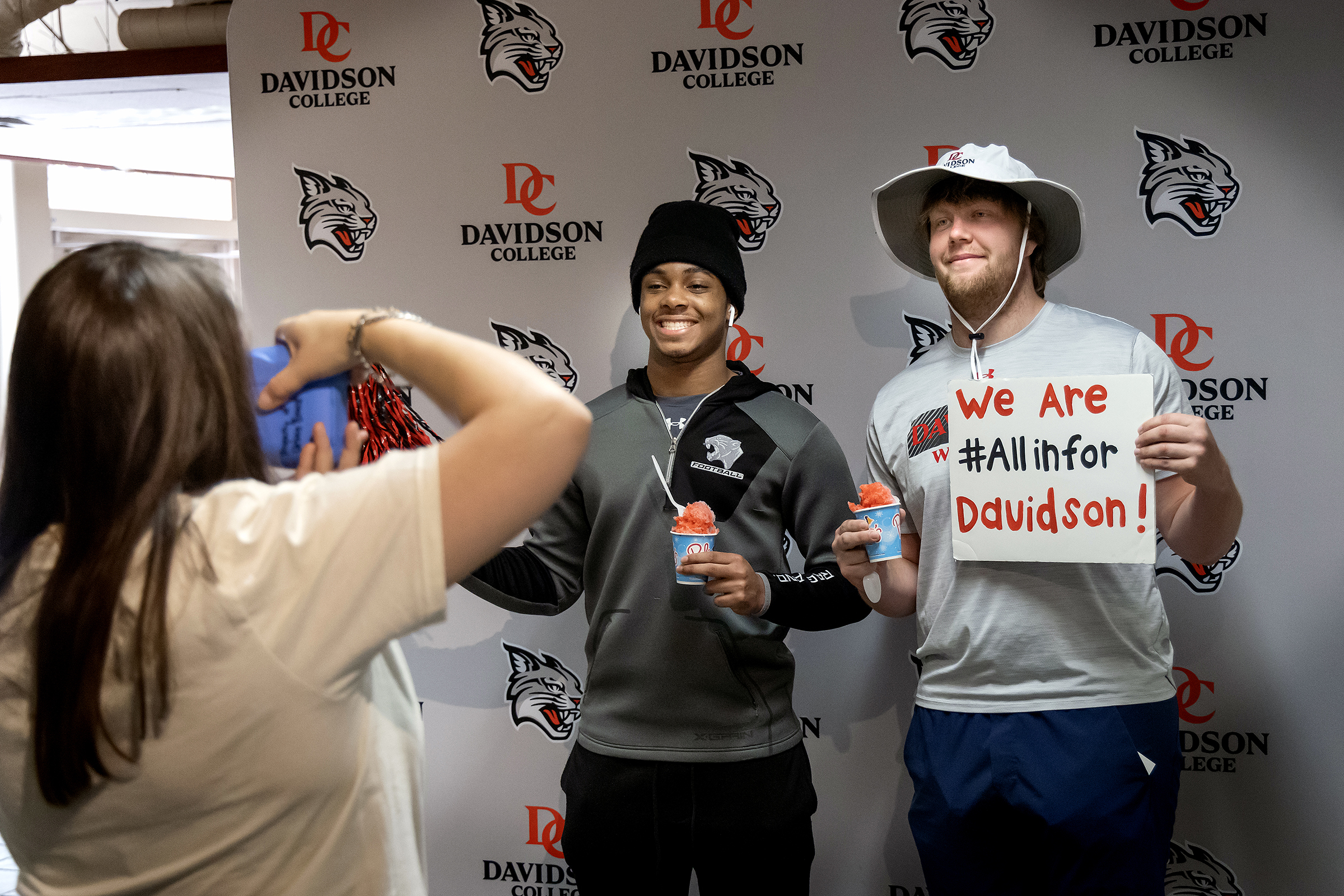Students Bring Spanish Instruction to Elementary School Children
March 3, 2017
Most Charlotte Mecklenburg Schools students must wait until middle school for instruction in international languages. But thanks to a dedicated corps of Davidson College students, the 600 students at Davidson Elementary School (DES) are way ahead of their peers in other schools.
As many as 40 Davidson students volunteer for SiDES (Spanish in Davidson Elementary School), spending 45 minutes once per week in all of the school's 27 first through fifth grade classrooms.
The effort is led by Hispanic Studies Professor Kyra Kietrys, in conjunction with teachers and administrators at DES.
"We're lucky to have Davidson College partner with us on this. Our world is changing, and the earlier kids get exposed to differences in languages and cultures, the better we'll all be. It wouldn't happen without the college volunteers," said DES assistant principal Erica Nelson. "They're wonderful! They arrive on time and are always well prepared."
More than 40 years ago, Davidson students began volunteering ad hoc at DES as reading buddies or Big Brother/Big Sisters. For a time, Davidson students enrolled in Spanish 311 were required to volunteer at DES to receive credit for the course. In the fall of 2012, Kietrys reestablished the program so that student volunteers could participate on one of two levels.
Both fall and spring semesters accept Davidson students as non-credit volunteers. However, during the fall semester students have the option to sign up for a credit course, "SPA 311-Teaching Spanish in the Elementary School," which combines service at DES with more rigorous requirements and lessons in pedagogy of teaching an international language.
Davidson volunteers form instruction teams at each grade level, and get together weekly to plan objectives and activities for the next class period. Lesson plans are shared with Kietrys, who edits them into a final plan for the week's session ahead.
Learning Together
David Esensoy '19 has worked with the program each of his four semesters at Davidson so far, and served as team leader of the fourth grade instructors.
Typical lesson plans begin with a song. Esensoy's sessions begin with a chorus of the Uno, dos, tres amigos song to help the students learn numbers.
At first, Esensoy was hesitant to get involved in SiDES.
"I didn't think that I would enjoy it so much, but now it's the highlight of my week," he said. "The kids are always in a great mood. They look up to us and want to do well for us. I always leave laughing or smiling."
It's also a valuable experience in light of his own ongoing efforts toward fluency in Spanish.
"They always say ‘You learn the best when you teach someone else,'" he noted. "And it's true. I often will need to look up vocabulary words myself before introducing them to the class."
Alexandrea Moseley '17, a Hispanic Studies major and math minor, is enjoying her fourth semester as a SiDES teacher.
After team-teaching with another student last fall, she is teaching second graders by herself this semester.
"Second graders are great," she observed. "They're not old enough to be too sassy, but just old enough to not be too much of a handful."
Lesson plans are designed to be interactive and engaging, presented in the form of songs, and readings from familiar books like The Very Hungry Caterpillar or Brown Bear/Brown Bear that have been translated into Spanish. Vocabulary lessons focus on everyday items such as clothing, animals, colors, body parts, weather and food.
Moseley likes to get students out of their seats with craft activities and games like "Red Light Green Light" and "Simon Says," "Bingo" and "Charades" in Spanish. Volunteers also incorporate Hispanic cultural traditions like Day of the Dead and the Cinco de Mayo fiestas.
"At our final session last semester we pushed all the chairs aside and danced to Latin music," Esensoy said. "It was the most fun thing all semester."
The regular classroom teacher remains in the room throughout Spanish class. They ensure good student behavior, but most often end up using the time to catch up with paperwork.
Student Engagement
Classes often include several native Spanish-speaking students. Because they already understand the language and might tune out of the instruction session, Moseley tries to keep them engaged by appointing them as classroom helpers.
"It gives them something to do, and lets them be leaders among their peers for a while," she said.
Esensoy encourages the use of their Spanish fluency by inviting English speakers stumped at a question to "phone a Spanish-speaking friend" to get some help.
Though the instruction time is limited, there's more benefit to the DES students than just learning a few words in another language.
"They aren't learning just Spanish, they're learning a whole stream of culture," Esensoy noted.
Kietrys also acknowledged that language learning requires a lot of time and repetition, and an hour a week won't go far. But fluency isn't the goal, she said. "We're trying to plant a seed that will grow when they're older and ready to learn in a serious way."
In addition to providing a service to the school, Moseley said the program has helped her broaden her involvement with the Davidson community.
"I've had kids stop me on the street downtown and say, ‘Hola, you're my Spanish teacher!'" she said. "What a good feeling that is."
Bill Giduz
bigiduz@davidson.edu
704-894-2244



